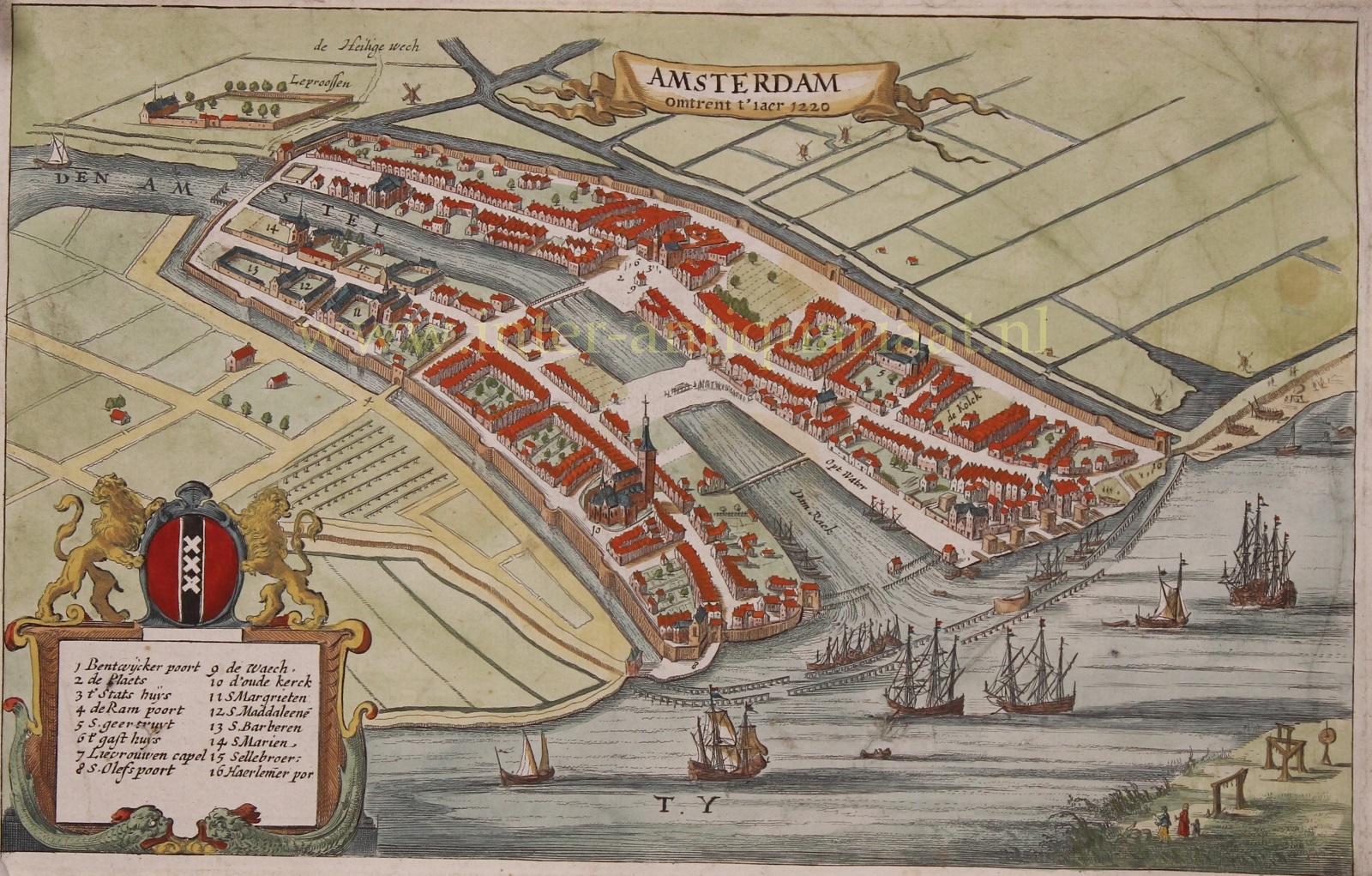Amsterdam around 1220 – Otto and Jodocus Smient, 1662/1663
AMSTERDAM IN THE 13TH CENTURY
“Amsterdam omtrent t’ iaer 1220” [Amsterdam around the year 1220]. Copper engraving attributed to Christoffel van Hartogvelt, from “Handvesten, Privilegien, Willekeuren ende Ordonnantien der Stad Amstelredam” [charters, privileges, regulations, and ordinances of the city of Amsterdam], first published by Otto and Jodocus Smient in 1662/1663. Coloured by a later hand. Size: 16.5 x 26.5 cm.
The earliest simple chapel stood in Amsterdam around 1200. Amsterdam first appears in written history in 1275 when Count Floris V grants free passage to the people living near the dam in the river Amstel.
How Amsterdam looked in the 13th century is not known in detail. However, that period already captured the imagination in the 17th century, when the city experienced its Golden Age and as a powerful city it looks back on its earliest beginnings.
This map shows buildings on both the old and new sides of the Amstel. The houses are drawn upright. However, the map does not align with the year 1220 indicated in the title. Several important buildings are incorrectly marked. For example, the Oude Kerk [old church] was built only from around 1250, with the tower only completed around 1375, and construction on the old town hall didn’t begin until the 14th century. Interesting is the detail of the funeral procession on its way from “Opt Water” (i.e. Damrak) to the Oude Kerk.
On the foreground to the right are there is a a field of gallows. Lepers resided in a walled area to the left in the background. In those days they preferred to keep undesirable individuals outside the city.
Price: SOLD


